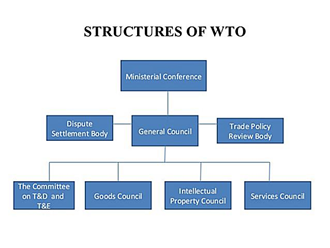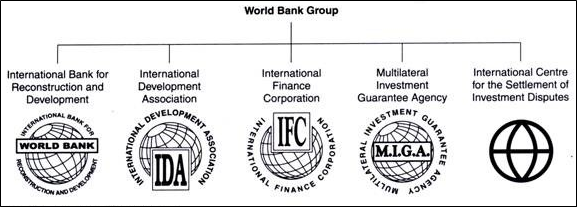Meaning
Public-Private Partnership (PPP) is a collaborative model where the government and private sector entities come together to finance, build, and operate projects that are typically the responsibility of the public sector. This partnership leverages the efficiency, expertise, and resources of the private sector to deliver public services and infrastructure. The PPP model is seen as an effective means to bridge the gap between the increasing demand for public infrastructure and the limited financial resources available to the government.
Salient Features of PPP
1. Legal Framework: Under PPP, a legal relationship is defined between the government or a government-owned entity and a private sector entity for a specified period. This ensures clarity in responsibilities, rights, and obligations of both parties.
2. Risk Allocation: One of the core principles of PPP is the allocation of risks between the public and private sectors. Typically, risks are allocated to the party best able to manage them, with the ownership of the assets often remaining with the public sector.
3. Regulation: Policies and projects under PPP are regulated by the Department of Economic Affairs, Ministry of Finance. This ensures that PPP projects align with national priorities and deliver value for money.
4. Variety of Models: There are various models of PPP, each with its unique structure, advantages, and challenges. These models can be classified based on investment share and operational type.
Types of PPP Models Based on Investment Share
-
- Management Contracts: These involve the private sector managing a public service or facility for a fixed fee, without significant investment. The government retains ownership and responsibility for financing the service.
- Turnkey Projects: The private sector is responsible for designing, building, and delivering a fully operational facility to the public sector, which then operates it.
- Lease: The private sector leases a facility from the government, operates it, and is responsible for its maintenance, while the government retains ownership.
- Concession Agreement: The private sector finances, builds, and operates a facility for a specified period, after which ownership reverts to the public sector.
- Private Finance Initiative (PFI): The private sector finances and constructs a facility, which the public sector then leases back. This model is popular in sectors like healthcare and education.
- Private Ownership: The private sector entirely owns and operates the facility, typically in industries where full privatization is feasible and desirable.
Types of PPP Models Based on Operational Type
Build-Operate-Transfer (BOT): The private sector designs, finances, builds, and operates a facility, then transfers it back to the public sector after a specified period. The private partner recovers costs through revenue generated during the operation phase.
-
- Advantages
- Efficient allocation of construction and operational risks.
- Encourages private sector innovation and investment.
- Challenges
- High financial and operational risks for private entities.
- Potential for public sector dependency on private expertise.
- Advantages
Various other forms of BOT Model
-
- Build-Own-Operate (BOO): The private sector builds, owns, and operates the facility, with ownership permanently remaining with the private entity.
- Build-Own-Operate-Transfer (BOOT): The private sector partner is granted authorization to finance, design, build and operate an infrastructure component for a specific period, after which ownership is transferred back to the public-sector partner. BOOT is used for large infrastructure projects.
- Design-Build (DB): The private-sector partner designs and builds the infrastructure to meet the public-sector partner’s specifications, often for a fixed price. The private-sector partner takes all risk.
- Lease-Develop-Operate (LDO): The government leases an existing facility to the private sector, which then develops and operates it. Ownership remains with the public sector.
Recent Popular Investment Models
-
- Engineering, Procurement, and Construction (EPC)
- Hybrid Annuity Model (HAM)
- Toll-Operate-Transfer (TOT)
1. Engineering, Procurement, and Construction (EPC) Model
The EPC model, also known as the turnkey model, is a widely used contracting arrangement in the construction and infrastructure sectors. Under this model, a single entity, typically a private contractor, is responsible for all aspects of the project, including engineering design, procurement of materials, and construction. After completion, the project is handed over to the government, which takes on the responsibility for operation and maintenance.
Advantages
-
- Project Efficiency: EPC contracts streamline the construction process, with the contractor bearing full responsibility for project execution. This reduces the time and effort required by the government to manage multiple contractors or interfaces, leading to more efficient project delivery.
- Cost Certainty: The fixed-cost nature of EPC contracts can provide the government with greater certainty over the final project costs, as the risk of cost overruns is transferred to the contractor.
- Quality Assurance: Since the contractor is responsible for the design and construction, there is a strong incentive to ensure high-quality work to avoid future liabilities.
Challenges
-
- High Initial Costs: The government needs to finance the entire project upfront, which can be a significant burden, especially for large-scale infrastructure projects. This often leads to delays or cancellations due to budgetary constraints.
- Risk of Contractor Bankruptcy: If the contractor faces financial difficulties or goes bankrupt, the government may be left with an incomplete project and may incur additional costs to complete it.
- Limited Innovation: EPC contracts are often rigid, with little scope for flexibility or innovation during the construction phase. This can lead to suboptimal outcomes if the project needs to adapt to changing circumstances.
2. Hybrid Annuity Model (HAM)
The Hybrid Annuity Model (HAM) is a relatively newer approach that blends elements of the EPC and BOT (Build-Operate-Transfer) models. Under HAM, the government bears 40% of the project cost during the construction phase, with the private partner covering the remaining 60%. The private entity is responsible for building and maintaining the infrastructure, while the government provides annuity payments to the private partner over the concession period.
Advantages
-
- Risk Sharing: HAM provides a balanced risk-sharing mechanism. The government assumes the risk of revenue generation, while the private sector is responsible for construction and maintenance. This reduces the financial burden on the private sector and encourages their participation in large infrastructure projects.
- Project Viability: The annuity payments by the government provide a steady revenue stream for the private sector, making projects under HAM more financially viable and attractive.
- Better Maintenance: Since the private partner is responsible for maintenance, there is an incentive to ensure high-quality construction to minimize future maintenance costs.
Challenges
-
- Government Financial Burden: Although HAM reduces the initial financial burden on the private sector, it increases the long-term financial obligations of the government, which must make annuity payments over several years.
- Implementation Complexity: HAM contracts are more complex than traditional EPC contracts, requiring careful drafting and management to ensure that both parties meet their obligations. This complexity can lead to delays in project initiation and execution.
- Dependency on Government Payments: The model’s success heavily depends on the timely disbursement of annuities by the government. Delays or defaults in payments can lead to financial stress for the private sector partner.
3. Toll-Operate-Transfer (TOT) Model
The Toll-Operate-Transfer (TOT) model is a relatively recent initiative in infrastructure development, particularly in the road sector. Under this model, existing infrastructure assets, such as highways that are already operational and generating toll revenue, are offered to private investors for a fixed concession period, usually ranging from 15 to 30 years. During this period, the private operator is responsible for operating and maintaining the asset while collecting toll revenue as compensation.
Key Features of the TOT Model
-
- Revenue Generation: The TOT model allows the government to monetize existing infrastructure assets, generating immediate revenue without the need to divest ownership. This revenue can be reinvested into new infrastructure projects, creating a virtuous cycle of development.
- Low-Risk for Investors: Since the assets under the TOT model are already operational and generating revenue, the model presents a lower risk profile for investors compared to greenfield projects. Investors have clear visibility on the revenue potential, making it an attractive investment opportunity.
- Operational Efficiency: By transferring the operation and maintenance responsibilities to a private entity, the TOT model ensures that these assets are maintained to high standards. Private operators typically bring in efficiencies in toll collection and maintenance practices, which can lead to better service quality and lower operating costs.
Challenges of the TOT Model
-
- Revenue Uncertainty: While the model offers a lower risk compared to new projects, there remains uncertainty about future toll revenue due to factors like changes in traffic volumes, regulatory policies, or alternative routes.
- Dependence on Concession Terms: The success of the TOT model heavily depends on the concession agreement terms, which must balance the interests of the government, the private operator, and the public. Poorly structured agreements could lead to disputes or suboptimal outcomes.



